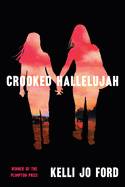
| Publisher: | Grove | |
| Genre: | Short Stories (single author), Literary, Fiction | |
| ISBN: | 9780802149121 | |
| Pub Date: | July 2020 | |
| Price: | $26 |
| Starred | Fiction |
by Kelli Jo Ford
Kelli Jo Ford, whose fiction has already earned several prizes, including the Paris Review Plimpton Prize, makes a magnificent #OwnVoices novel debut with Crooked Hallelujah.
In 1974, 15-year-old Justine lives in the Cherokee Nation of Oklahoma with her aging Granny and embittered mother, Lula. Almost seven years ago, Justine's father delivered his family to Beulah Springs Holiness Church for service and vanished: "Lula held herself together with a religion so stifling and frightening that Justine... never knew if she was fighting against her mother or God himself." Her first act of rebellion--sneaking out to meet an older boy--ends in rape. The traumatized, silenced teen gives birth to Reney, sealing their symbiotic relationship for life: "Mom was my sun and my moon," Reney later observes.
In the decades that follow, Justine works hard to break the cycle of abandonment and neglect for Reney. Despite floundering relationships with useless men, Justine eventually marries Pitch, whom she can't live without--no matter how many times they leave each other. Justine and Reney move to Texas, where Reney settles into a ready-made family, finding comfort and support in Pitch's family's farm, most especially with Pitch's debilitated mother, another forsaken woman, although she's still married to his philandering father. As Reney matures, she seems doomed to repeat her mother's mistakes but eventually finds the strength to drive far, far away.
A citizen of the Cherokee Nation of Oklahoma, Ford adroitly, affectingly weaves Indigenous history into her spellbinding narrative, exposing displacement, cultural erasure and socioeconomic disparity. The interlinked story structure allows for an intriguing, vast cast, without losing sight of Justine and Reney. --Terry Hong, Smithsonian BookDragon

| Publisher: | Flatiron | |
| Genre: | Mystery & Detective, Crime, Thrillers, Fiction, African American | |
| ISBN: | 9781250252685 | |
| Pub Date: | July 2020 | |
| Price: | $26.99 |
| Starred | Fiction |
by S.A. Cosby
Aficionados of good noir have certain expectations: a moral dilemma, a crime, a double cross, a chase and wittily blunt dialogue, all unfolding against a pitiless landscape. S.A. Cosby's unforgettable Blacktop Wasteland has all that, but it doesn't play out in the genre's customary white metropolis. The novel revolves around a Black family living in Virginia's Red Hill County--"no one's destination," as lifelong resident Beauregard Montage puts it.
Things aren't going well for Beauregard. The garage he owns with his cousin is losing customers to a new (white-owned) shop. He's got a mother in a nursing home that needs to be paid, a kid who needs braces, another who needs glasses and still another who won't make it out of Red Hill if Beauregard can't cover her fall college tuition. He's been flying right for a while now: five years in juvie will do that, plus he wants to do better for his kids than his long-absent father did for him. But when Beauregard is invited to be the getaway driver in a diamond heist in another county, does he really have a choice?
Blacktop Wasteland starts with a car chase, and Cosby (My Darkest Prayer) never takes his foot off the accelerator. He's a natural storyteller and a nimble writer (one character is "as useful as a white crayon"). And Cosby works the magic performed by only the best noir scribes: somehow he gets readers to root for the protagonist as he commits a crime. --Nell Beram, author and freelance writer

| Publisher: | Viking | |
| Genre: | Women, Literary, Coming of Age, Fiction | |
| ISBN: | 9781984879523 | |
| Pub Date: | July 2020 | |
| Price: | $26 |
| Fiction |
by Amanda Brainerd
Amanda Brainerd's debut novel, Age of Consent, is a bracing, full-throttle dive into female coming-of-age in 1980s New York City. Justine grew up in New Haven with well-meaning, artistic parents who were often distracted by trying to keep their avant-garde theater afloat. Eve, in contrast, grew up with an overbearing mother on Park Avenue. The two become close friends while stuck in a preppy Connecticut boarding school. They long for the future lives they envision for themselves in New York City. But when they have the opportunity to spend a summer living and interning there, the experience changes them in ways they could not have imagined.
As haunting and nostalgic as a sepia-toned photograph, Age of Consent captures a fascinating era. From the cocaine-fueled art scene to the hangover-hazy Hamptons, the world that Brainerd conjures is one defined both by lingering old-world glamour and crippling new-world carelessness. Poised at this crumbling intersection, Justine and Eve encapsulate the bittersweet desperation of young adulthood; as their desires reach new peaks, they are continually disillusioned. While their experiences at boarding school develop them as vulnerable but strong young women, their exploration of the complex social world of Manhattan reveals the uncomfortable truths behind the imagined lives they have constructed. Readers will enjoy the whiplash pace even as--like the novel's characters who become increasingly numb to the thrill--they yearn to pump the brakes before it's too late. --Alice Martin, freelance writer and editor
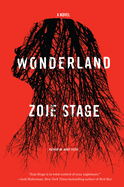
| Publisher: | Mulholland Books | |
| Genre: | Psychological, Horror, General, Supernatural, Thrillers, Fiction | |
| ISBN: | 9780316458498 | |
| Pub Date: | July 2020 | |
| Price: | $28 |
| Mystery & Thriller |
by Zoje Stage
The anxiety of isolation and change takes menacing form in Wonderland by Zoje Stage.
Orla was facing challenges before the first signs something supernatural was happening. At the age of 41, she has retired from the ballet and agreed that it is her husband Shaw's turn to pursue art. But instead of leaving New York City for a smaller, more affordable city, as she had imagined, they and their two young children are moving to a remote house in the woods. "Orla tried not to think of it as an amputation, but that's how it felt."
Shaw has found his calling in painting surreal nature scenes, and their family has gone from a one-bedroom apartment in a crowded city to an old wooden farmhouse. Bizarre things begin to happen with the weather, and what has been calling to Shaw and, to a lesser extent, to their daughter Eleanor Queen, might be something more sinister than his metaphorical muse.
As Stage gave form to the harsher experiences of motherhood in her first thriller, Baby Teeth, here she masterfully depicts an unknown force that embodies the oppressive tension that can come with being trapped with one's family, cut off from the rest of society. Its release in the context of worldwide quarantine and stay-at-home orders during the Covid-19 pandemic is eerily timely, but Orla has much worse demons to face than the ones inside the mind. This story of domestic challenges and mounting horror will please fans of Shirley Jackson. --Kristen Allen-Vogel, information services librarian at Dayton Metro Library
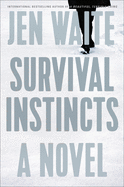
| Publisher: | Dutton | |
| Genre: | Psychological, Women, Suspense, Thrillers, Fiction | |
| ISBN: | 9781524745837 | |
| Pub Date: | July 2020 | |
| Price: | $26 |
| Mystery & Thriller |
by Jen Waite
"There are some stories that don't need to be told." Anne keeps secret the story of her daughter's father in order to protect Thea. But Thea is now 12 and the Internet is a powerful tool. For reasons unknown to Anne, Thea has recently changed into a volatile preteen, her relationship with Anne strained by deceit. Since Thea is tight with Anne's mother, Rose, Anne schedules a girls' getaway to a remote cabin, hoping to reconnect. There, the past fractures the present, threatening the lives of all three women.
Jen Waite is infinitely qualified to write about psychopaths, having shared the story of her former marriage in a courageous memoir, A Beautiful, Terrible Thing. Waite now folds her experience into a novel, Survival Instincts, focusing on the lengths to which mothers will go to protect their children. Starting "Four Days Before the Cabin," Waite alternates timelines and points of view as Anne, Rose and Thea head to the cabin. Meanwhile, an unidentified man spins a tale of violence as he goes on the hunt.
Waite deftly dips into the past to fill out the framework of her characters and ultimately connect the women to "The Man." Satisfying turns and surprises highlight the narrative, which, despite some extraneous exposition, remains tense and quickly paced. Waite keeps readers invested in each woman, despite their human faults and wrong turns, and everyone will wish they had a grandmother like Rose. Waite's fiction debut is an intense story of women doing what it takes to survive. --Lauren O'Brien of Malcolm Avenue Review

| Publisher: | Knopf | |
| Genre: | Biography & Autobiography, Travel, South - South Atlantic (DC, DE, FL, GA, MD, NC, SC, VA, WV), United States, Literary Figures, Personal Memoirs | |
| ISBN: | 9780525521389 | |
| Pub Date: | July 2020 | |
| Price: | $26.95 |
| Biography & Memoir |
by Kent Russell
If Hunter Thompson and Joan Didion had produced a literary offspring, a young man whose older brother was Bill Bryson, his writing might sound something like Kent Russell's. That's the spirit that infuses In the Land of Good Living: A Journey to the Heart of Florida, Russell's entertaining, often deeply reflective portrait of his uneasy relationship with his native state, a place he calls "Hothouse America, a microcosm or synecdoche of the larger nation."
In late August 2016, the Miami-born journalist (I Am Sorry to Think I Have Raised a Timid Son), along with his friends Glenn, a Canadian documentary film producer, and Noah, an Iraq War Marine veteran and fellow Floridian, embarked on a daunting journey, attempting to re-create the 1,000-mile walking campaign of former governor and senator Lawton Chiles in 1970. The goal, as Russell enthusiastically envisioned it, was to produce the "grandest, funniest, most far-ranging, depth-plumbing, tear-jerking, je-ne-sais-quoi-capturing work of art ever to emerge from the rank morasses and mirage metropolises of our beloved home!"
If they don't quite pull off that feat, the resulting account of their shambling odyssey on foot through America's "most dangerous pedestrian state" will more than suffice. Love it or loathe it, the third most populous state occupies an outsized presence in the country's life and consciousness. Anyone who wants to understand better why that is, and what it portends for the country, would do well to start with the energetic and insightful In the Land of Good Living. --Harvey Freedenberg, freelance reviewer

| Publisher: | Little, Brown | |
| Genre: | Biography & Autobiography, True Crime, United States, 19th Century, Con Artists, Hoaxes & Deceptions, Religious, Criminals & Outlaws, History | |
| ISBN: | 9780316463591 | |
| Pub Date: | July 2020 | |
| Price: | $29 |
| Biography & Memoir |
by Miles Harvey
Brilliantly summed up by its subtitle, The King of Confidence: A Tale of Utopian Dreamers, Frontier Schemers, True Believers, False Prophets, and the Murder of an American Monarch is a fascinating glimpse into the dramatic world of antebellum America. Out of the "Burned-Over District" of 19th-century New York State sprang the Shakers, the Mormons and some less-remembered religious leaders, including James Strang.
In the wake of Joseph Smith's murder, Strang managed to convince a significant number of Mormons that Smith had declared him his successor. While the main body of Mormons headed west to Utah, Strang, who was "by 1853... a bona fide celebrity," used his charisma to draw several hundred followers north to Beaver Island, off the coast of Michigan's upper peninsula.
There he established a kingdom, had himself crowned as King of Earth and Heaven, proceeded to take multiple wives, speak out against slavery and generally raise a ruckus that led to his murder. A strange and enigmatic character, Strang exemplified the fervor of an era in which "a growing number of Americans came to believe the world was on the verge of an apocalypse."
Harvey (The Island of Lost Maps) does an excellent job of not only detailing Strang's peripatetic life, and those of some of his more outlandish followers, but also of placing their lives in the context of the turbulent 1850s. Strang, a relatively small actor who was brought to trial as a political move, nevertheless played an interesting role in the coming conflagration of the Civil War. Readers of Erik Larson or Gary Krist are sure to devour The King of Confidence. --Jessica Howard, bookseller at Bookmans, Tucson, Ariz.
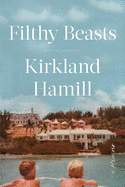
| Publisher: | Avid Reader Press | |
| Genre: | Biography & Autobiography, Rich & Famous, Addiction, Psychology, Personal Memoirs, Psychopathology | |
| ISBN: | 9781982122768 | |
| Pub Date: | July 2020 | |
| Price: | $27 |
| Biography & Memoir |
by Kirkland Hamill
Filthy Beasts by Kirkland Hamill is an astonishing memoir of the author's unconventional upbringing, as the middle child of a charismatic, emotionally abusive mother with working-class Bermuda roots and a hapless, ineffectual father born with a silver spoon in his mouth. Hamill and his two brothers began life in their father's rarefied world of New York privilege, a style of living that was not destined to last. They then spent the majority of their childhood in Bermuda, left to raise themselves with few resources while their mother, Wendy, struggled to rebuild her life after a bitter divorce.
In chapters that read like a captivating family drama, Hamill excavates his relationship with a once exuberant, attentive mother who became hollowed out by endless glasses of scotch. Hamill's tenderness toward her reveals a central conflict of his chaotic childhood: he sees his mother as a victim and doesn't hold her responsible for her abject parental neglect. He remembers who she was before, the comfort and security she once provided and the sad bravery with which she tried to reclaim her glamorous life. While Wendy slowly fades away into an alcoholic haze the brothers try to bring her back, "like kittens nuzzling on the corpse of their unresponsive mother."
The tragedy of Wendy's descent into alcoholism is matched by Hamill's deep confusion over his sexual identity. Readers will appreciate his dry wit and compassionate lens while admiring the survival instincts that led Hamill to proudly assert himself as a gay man deserving of romantic love. --Shahina Piyarali, writer and reviewer
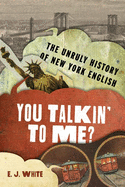
| Publisher: | Oxford University Press | |
| Genre: | Sociolinguistics, Lexicography, Linguistics, Popular Culture, Language Arts & Disciplines, Social Science | |
| ISBN: | 9780190657215 | |
| Pub Date: | July 2020 | |
| Price: | $19.95 |
| Reference & Writing |
by E.J. White
E.J. White, in this diverting history of New York City's distinctive form of English, is perhaps the first writer to begin and end an academic press volume with the F-word. This deviation from the scholarly norm, combined with its cheeky title, sets the tone for You Talkin' to Me?, a book that explains the evolution of New York's English and its influence on the rest of the country.
The boisterous, jovial narrative tells how the developing city's newspapers and pulp novels introduced a new vocabulary to Americans, from "con man" to "street-walker," "kick the bucket" and "go on a bender." Tin Pan Alley's lyricists popularized "Brother, Can You Spare a Dime," and, later, hip-hop artists brought the language of rap to the suburbs and Hamilton to theaters across the U.S.
White, who teaches the history of the English language at Stony Brook University, includes little-known facts, such as that Star Wars' C-3PO droid was first written to have a New York accent and that West Side Story was initially going to be East Side Story, about Jewish and Irish Catholic New Yorkers.
"New York City is a great factory of language," White says, and makes that clear in a book that is sure to appeal to anyone who loves New York. --Janet Brown, author and former bookseller
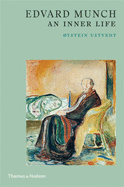
| Publisher: | Thames & Hudson | |
| Genre: | Art, Modern (Late 19th Century to 1945), Permanent, History, European, Collections, Catalogs, Exhibitions | |
| ISBN: | 9780500295762 | |
| Pub Date: | July 2020 | |
| Price: | $19.95 |
| Art & Photography |
by Øystein Ustvedt, trans. by Alison McCullough
"All art like music must be created with one's lifeblood," Edvard Munch (1863-1944) declared in a note in the early 1890s. Øystein Ustvedt, curator at the National Museum in Oslo, offers a vital, approachable introduction to the celebrated expressionist--best known for The Scream, that howl of despair beneath a sky of undulating orange--that demonstrates how the painter lived that precept.
Munch strived over his half-century career to create emotional, subjective art based on existential experiences, to capture on his canvases what the novelist Knut Hamsun, a contemporary of Munch, deemed "the unconscious life of the mind." Artists in Munch's hometown Kristiania (now Oslo) recognized his genius early, even as critics and authorities in the late 19th century at first found his work too raw, too frank and often not convincingly finished. Edvard Munch: An Inner Life, Ustvedt's affordable study, presents 130 images of Munch's paintings, illustrations, prints and photographs whose chronological arrangement confirms that, from the start, the artist imbued his work with that lifeblood. The haunting The Sick Child (1885-86) confounded Kristiania with its rough brushstrokes, which draw attention to the impassioned creation of the painting itself--and stir subjective feeling that the works of the realists could not. Munch's depictions of bohemian life would likewise arouse controversy, including denunciations right into the 20th century.
Ustvedt's examination of Munch's career touches on all the biographical turning points--Munch was broke for much of his life--but is keyed above all else to the work. In Alison McCullough's translation, techniques, breakthroughs, symbols, controversies and the artist's lifeblood all get illuminated in prose of rare clarity. --Alan Scherstuhl, freelance writer and editor
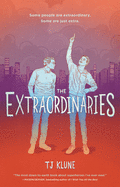
| Publisher: | Tor Teen | |
| Genre: | Humorous, Fantasy, Contemporary, General, Young Adult Fiction, LGBT | |
| ISBN: | 9781250203656 | |
| Pub Date: | July 2020 | |
| Price: | $18.99 |
| Starred | Children's & Young Adult |
by TJ Klune
TJ Klune (The House in the Cerulean Sea) shines in his YA debut, The Extraordinaries, a creative exploration of identity among queer kids and superheroes.
Gay 16-year-old Nick Bell is a proud author of online queer fiction based on the Extraordinaries, two actual superheroes in his city. While he feels a strong pull toward the superhero world, he spends a significant amount of his time grappling with living with ADHD: "Some people were born to be an Extraordinary. Nick was born to have a million thoughts in the space of a minute that often led to splitting headaches." Still, though, Nick has a quest: he is going to become (and date) a superhero. As the story unfolds, hints about the Extraordinaries' mysterious identities are cleverly revealed but, even as the superhero characters develop and become more nuanced, Nick obliviously sticks to his plan, missing all the clues around him.
Klune beautifully balances weightier topics (whether to medicate teens, intimate relationships, the death of a loved one), nail-biting superhero battle scenes and hilarious dialogue that emphasizes Nick's endearing--sometimes awkward--rapidly moving thoughts. As Nick explains to best friend Seth, "One moment, I was reading about diamond mines in Latin America, and the next, I'm following step-by-step instructions on making an idea board on Cosmo." Klune's deliberate use of traditional comic book themes, such as masking one's identity, mirror common struggles faced by neurodiverse and LGBTQIAP+ youth; this thoughtful approach urges readers to embrace their true selves. --Kieran Slattery, freelance reviewer, teacher, co-creator of Gender Inclusive Classrooms
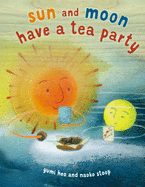
| Publisher: | Schwartz & Wade | |
| Genre: | Concepts, Opposites, Bedtime & Dreams, Imagination & Play, Juvenile Fiction | |
| ISBN: | 9780385390330 | |
| Pub Date: | July 2020 | |
| Price: | $17.99 |
| Children's & Young Adult |
by Yumi Heo, illust. by Naoko Stoop
In the charming Sun and Moon Have a Tea Party by Yumi Heo, illustrated by Naoko Stoop, the two celestial orbs share afternoon tea and argue about the activities they see in the world below.
Sun and Moon each have a very different picture of the terrestrial world. Sun sees children waking up, going to school and walking through the town. Moon views children going to sleep and streets "dark and... lonely as a moonless sky." They continue to disagree, providing evidence of their observations: Sun sees the birds flying through the air; Moon views them settling down to sleep in the trees. They cannot resolve their differences until Cloud comes along. Cloud, familiar with the conditions of both day and night, urges Moon to stay up and enjoy the daytime and then persuades Sun to experience the nighttime.
This gentle tale can serve as a bedtime story or a picture book introductory STEM lesson for young students. Yumi Heo, a prolific author and illustrator who won a Christopher Award and a Charlotte Zolotow Honor, died in 2016 with her story unpublished. Stoop, a New York Times Best Illustrated Children's Books winner for Red Knit Cap Girl, was asked to create the illustrations for this posthumous publication. Her illustrations, created in mixed media on plywood and finished digitally, are naively charming and delightfully detailed, depicting diverse households, busy streets and childlike personifications of Sun, Moon and Cloud. Stoop's art in collaboration with Heo's text, which alternates between describing the day world and the night world, allow young readers to realize quickly that both Sun and Moon are correct, which also supports their own daily experiences. --Melinda Greenblatt, freelance book reviewer